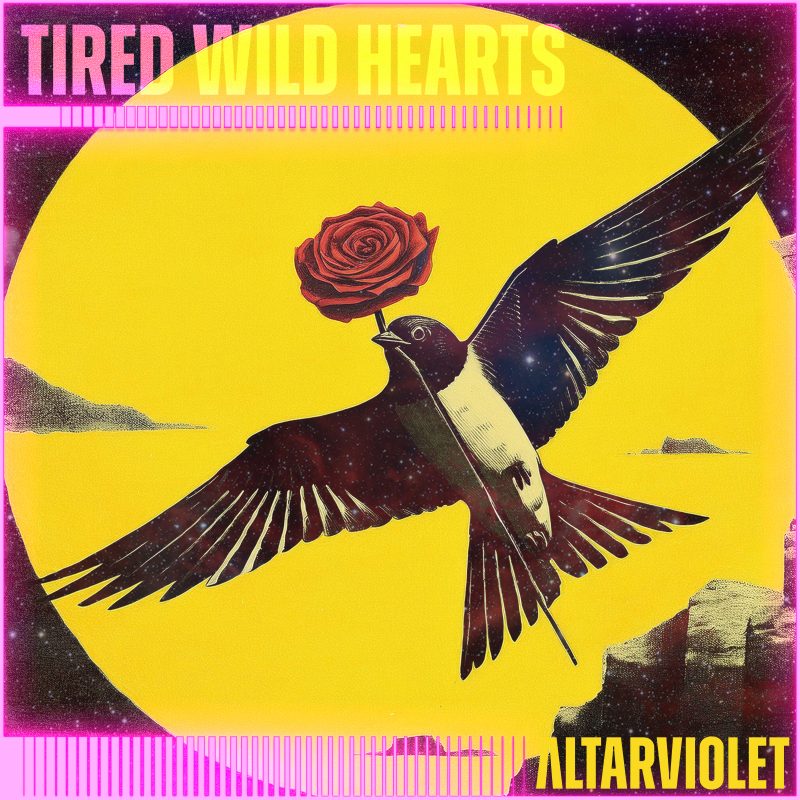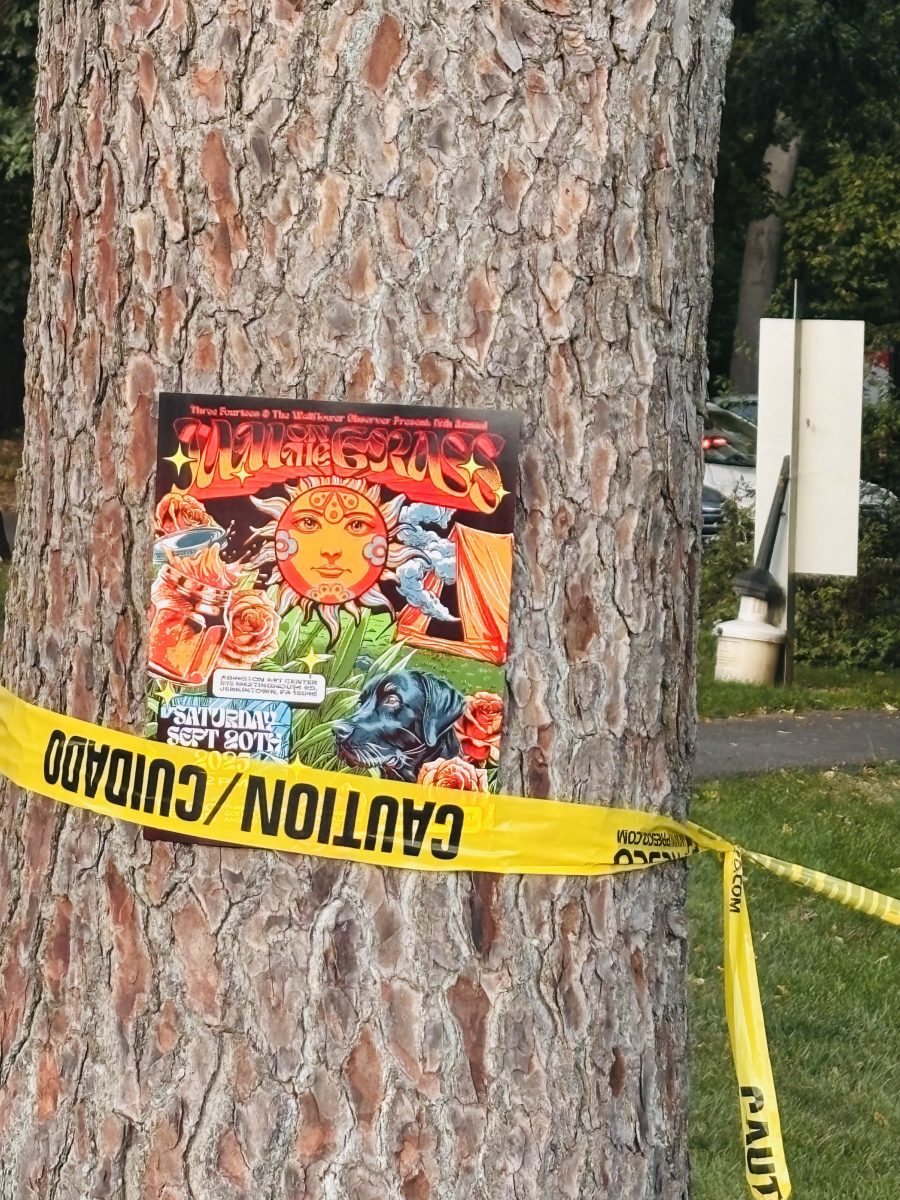Written by: Max Bennett, Photos by: Ali Brant; David Lisowski; Matt DeVito
Altarviolet Is No Alter Ego, It’s Greta Hotmer’s Essence. Go listen to the 2021 album Sojourn by Altarviolet. Then listen to Altarviolet’s 2024 album Tired Wild Hearts. One may think these albums were by two separate artists. But Altarviolet is, and always has been, Greta Hotmer.
Releasing Tired Wild Hearts was not just releasing a collection of songs to Altarviolet; it was a release of pressure. “I come from a couple of backgrounds, a singer-songwriter, but also I was in a rock band, and Thrice, Deftones, and Tool are some of my favorite bands,” Hotmer, 42, said in a video interview with That Mag.

When she lived in the Philadelphia area, Hotmer was singing in local rock band The Moxy, who readers may know due to their ties to Bam Margera.
“In my old band, I was exhausted.”
A few years ago, she headed west after a long-term relationship that also was musically collaborative came to an end. While Hotmer discussed her past with That Mag, she focused not on the relationship but her long journey to releasing Tired Wild Hearts. “I pretty much stayed in the singer-songwriter lane for a long time because that was the only thing I really knew,” she said.
While in The Moxy, some electronic elements came into the fray toward the band’s end, and Hotmer kept hearing synths in more and more music.

When she left her old life, she bought a Moog synthesizer. “I had no business doing,” she said of buying the instrument. “I got it to hold myself accountable, and I’m still learning how to use it.”
But if you put Tired Wild Hearts on, it doesn’t sound like she’s still learning to use the synth.
The 10-track album features plenty of synth work. From fuzzy house music bass lines to staccato-like, bright individual note riffs, the synth shines along with Hotmer’s soaring voice.
“I don’t have formal training in things,” she said. “As long as I can hear something and make it real, then I can do what I can do.”
She started on piano as a kid with her sister. The two would go to their lesson, and while her sister sat with the instructor, Hotmer would mess around with a keyboard in the next room.
“What I did most of those lessons is listen to all the sounds on the keyboard,” she said. “I remember being pretty young and thinking, ‘Oh, synths!’”

She moved on to guitar at about 12 years old and was heavily influenced by Tori Amos’s 1996 album Boys for Pele.
“She was so weird, and I loved that so much as a teenager,” she said. The synth and organ work on that album stuck with Hotmer, specifically from the second track, “Blood Roses.” The texture of those synths and organs made her want to infuse her own music with the same feelings. But she was turned up to 11, to use a music cliché, playing in rock and roll bands.
“I really love picking out and crafting synth sounds,” she said. “I love that sonic journey of getting all the nuances and vibes right. It’s an experience. I always think about that album when I’m thinking about sounds that I love.”
Tired Wild Hearts is an ode to those textures, and Hotmer’s fiancé has dubbed her new music “witch house.” What is “witch house,” you ask? Witch house brings together trap-style beats, electronic music, and pop vocals, creating a mysterious, almost supernatural soundscape. And, Hotmer produced the album herself using Logic Pro in her home. She had experience in recording studios before, watching people work the board while quietly taking in what she was seeing.

Her recording skills are largely self-taught, and a former bandmate passed down knowledge of mixing and how to carve out sounds one is looking for. She’s also taken these skills to Hollywood, so to speak. Hotmer has been submitting recordings to be featured in movie trailers. Having been exposed to quite a bit of musical theater as a kid, blending music and the world of theater and cinema seemed natural. She started hitting up people who worked in music licensing companies, telling them she was available for vocal recordings. Ever persistent, she found a contact and has been working with that person for a few months, with some recordings being shopped out to Netflix. But making music that’s licensable for big production houses such as Netflix is different from writing for herself.
Writing Tired Wild Hearts rekindled her passion for writing about, and for, herself. “This album is always what I’ve wanted to make and really get it out of my system,” she said. Almost like a pressure release.
And there is pressure to release. Having played in a rock band for many years, undergone a lengthy battle with Lyme disease, and seen her long-term relationship come to an end, Hotmer’s newest album is her way of telling the world, “This is me.”
Hotmer, now living in Colorado Springs, has found a life that embraces her out west. In addition to her fiancé and music friends, Hotmer has a found family in the jiu-jitsu community. A martial arts practitioner since 15, Hotmer doesn’t often compete in jiu-jitsu events, but trains four to five times a week with women who are looking for a workout and a bit of self-defense. She began with kickboxing, saying she really wanted to “beat the shit out of the bag.” Her then-instructor loved her ferocity and encouraged her to continue pursuing martial arts. Then she trained in Krav Maga, the martial art developed for the Israeli Defense Forces, and became a Krav Maga instructor for several years.
But then the aforementioned Lyme disease struck when she was 20. By 23, she had to put a halt on training. “I was like 80 years old for most of my 20s,” she said. “It’s why I refuse to do whatever I’m supposed to do at this age.”From about 23 to 35, martial arts were not a part of Hotmer’s life. But she dived back in, going on to earn her black belt in Krav Maga, then began taking small jiu-jitsu classes about seven years ago.

Now, she has two stripes on her jiu-jitsu brown belt, one level below a black belt. “It’s added so much to my life in so many ways,” she said.
Krav Maga, is explosive, and students are typically capable defenders in about six months. Jiu-jitsu is much more of a long-term discipline, an art, she said.
“I have fun now,” she said when comparing Krav Maga to jiu-jitsu. “I always wanted brothers, and now I have like 40 of them.” And when she trains other women in jiu-jitsu, she hopes they tap into their “warrior spirit.”
“It’s important,” she said of women feeling empowered and able to defend themselves. “I teach my girls to be terrifying.”
Hotmer said that of the things that make her, her, martial arts is one of the primary factors. Another is, obviously, music. “Music is the piece of me that I didn’t give proper homage to until now.”
“I’ve had tremendous challenges with things,” she said. “Not more so than other people, but feeling like I was in a cage for so long, I’m very, very grateful for just being able to do this and give it a go.”
Altraviolet
Spotify, Instagram, Website, YouTube, YouTube Music, Facebook, Apple Music, SoundCloud, Amazon Music








